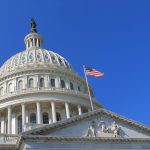Published April 1, 2014
The Obamacare open-enrollment season (supposedly) closed yesterday, so it is good time to step back and assess where things stand with the law and its first-year implementation.
Interestingly, Obamacare remains something of a Rorschach test for journalists and health-policy analysts. Looking at the same set of facts, two observers can reach very different conclusions.
For instance, Noam Levey of the Los Angeles Times writes that Obamacare “has spurred the largest expansion in health coverage in America in half a century.”
Meanwhile, health consultant Howard J. Peterson, writing at the Philadelphia Inquirer news site, says “the first four years of Obamacare has led to solving about 10 percent of the problem of uninsured citizens.” He expects no further improvement in the coming years.
So which is it? Is Obamacare on track to be an historic achievement? Or is it falling well short of the lofty goals set for it by the administration?
The Obamacare exchanges reportedly will have enrolled at least 7 million persons in health insurance plans through the end of March. As the Obama administration predicted, there was a large increase in sign-ups in the final days of the open-enrollment period, pushing the total enrollment numbers up even beyond the 6 million estimate touted by the president just last week.
This is without question good news for the law’s supporters and a significant turnaround since last November. After the first two months of shaky enrollment numbers, I expected the first year sign-up totals to be far short of projections. I was clearly wrong about that.
Administration officials realized when the fiasco was unfolding last fall that nothing mattered in the first year except getting people on the program — and so they did whatever was necessary to HealthCare.gov to make signing up easy. Those fixes are likely to lead to a large percentage of erroneous subsidy payments, as controls and other checks were turned off. That’s clearly a price the administration will gladly pay to get more people onto the program.
Seven million is also an overstatement of true enrollment in the insurance plans. About 20 percent or so of the enrollees have failed, or will fail, to continue payment of their required premiums, according to insurance-industry observers. So 7 million sign-ups translates into a little less than 6 million people who are expected to receive coverage.
And who are these enrollees? Remember, Obamacare forced the cancellation of many millions of insurance plans sold in the individual insurance market. The president later indicated that these plans could be reopened, but only in states with insurance regulators willing to go along with the president’s last minute change of heart. Some number of people with canceled plans likely ended up in the exchanges because they had no other real choice. Thus, several surveys have unsurprisingly shown that a relatively small percentage — perhaps one-third or lower — of the enrollees in the exchanges were previously uninsured. That implies that, so far, enrollment in the exchanges has reduced the ranks of the uninsured by about 2 million people.
It is also clear at this point that there are large state-by-state differences in enrollment experience. In states with activist governments pushing hard for enrollment, such as California and New York, the enrollment numbers are relatively high. But in large parts of the country, the numbers are far lower. For instance, at the end of February, enrollment in the California exchange had reached 2.3 percent of the state population. Meanwhile, in West Virginia, it was just 0.6 percent, and in Oklahoma it was just 0.9 percent. The numbers will obviously go up with March added to the enrollment totals, but the state disparities are unlikely to disappear entirely.
Each state is its own insurance market, whether it uses the federal exchange system or not. These state differences could mean that the Obamacare exchanges are viable in some states and regions of the country, while in other states and regions the numbers remain too low to sustain a stable insurance pool.
The administration also touts the Medicaid expansion as helping to reduce the uninsured. But most of the millions of new sign-ups in Medicaid are by people who were previously eligible for the program anyway. The number of people now on Medicaid who would otherwise have been uninsured is likely around 3 million or so at this point.
The original goals for Obamacare were far more ambitious. At the time of enactment, the Congressional Budget Office (CBO) estimated that Obamacare would lower the ranks of the uninsured by 19 million in 2014. Even as recently as last May, CBOestimated the reduction in the uninsured would be 14 million this year.
Moreover, for every newly insured American, there are several others who are now getting far worse health coverage than they had last year. Their premiums have gone up. They are facing much higher deductibles. And they are being forced to pay for mandated benefits that they would rather not have. This is the reason that Obamacare’s poll numbers continue to sink, and are unlikely to be buoyed by encouraging enrollment numbers.
At its heart, Obamacare was a large-scale redistribution program. It provides large new subsidies to lower-income households and to those with previously expensive insurance due to risk rating of their premiums. These subsidies are paid for by raising premiums on many millions of previously insured households, raising taxes significantly, and cutting Medicare.
The end result will be a reduction in the uninsured of some magnitude, that’s for sure. But it was never going to be hard to reduce the uninsured if that was all that concerned policymakers. Massive public subsidies and expansion of free public-insurance programs can expand insurance enrollment, so long as others were willing to pay for it.
But that wasn’t what was promised. Americans were told that reform would lower costs for everyone, and that no one would lose the policies they previously held and liked. People are dissatisfied with Obamacare because they’ve realized the law will never deliver on these promises. Indeed, just yesterday it was announced that health-care costs rose at the fastest pace in a decade in the last three months of 2013. Most Americans are seeing no benefit whatsoever from Obamacare, and in fact are paying much more than they ever have before.
In its first year, Obamacare did not completely collapse from lack of support or interest. That’s true. But that’s not the same thing as saying the law is out of the political woods and on track to be broadly accepted by the American people. Far from it.
James C. Capretta is a senior fellow at the Ethics and Public Policy Center and a visiting fellow at the American Enterprise Institute.







